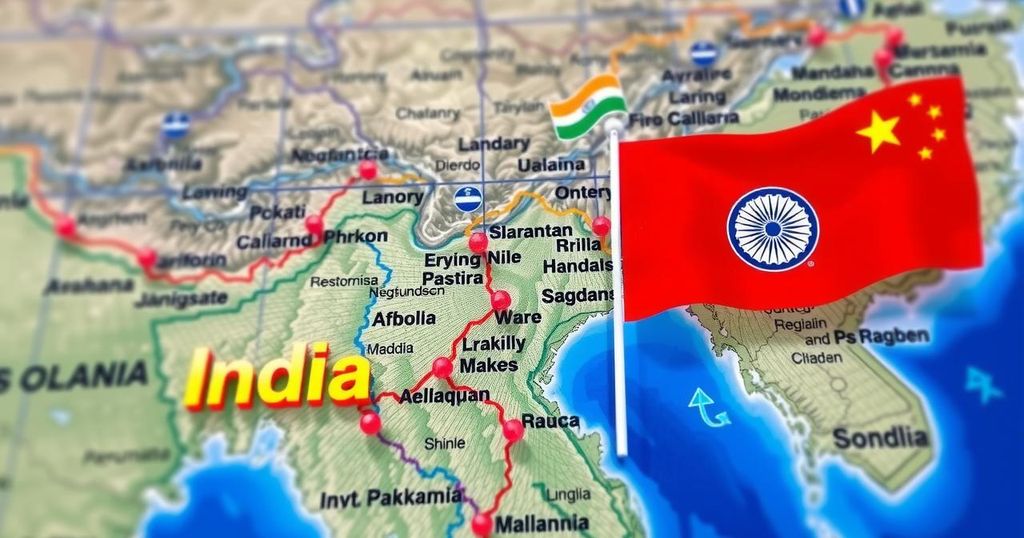India and China Complete Troop Disengagement Agreement Along LAC
On October 21, 2024, Foreign Secretary Vikram Misri announced an agreement between India and China for disengagement and new patrolling arrangements along the Line of Actual Control (LAC). This resolution follows a four-and-a-half-year military standoff involving tens of thousands of troops stationed at the border. Both nations are committed to ongoing diplomatic discussions to ensure stability and address remaining issues in the region.
On October 21, 2024, Foreign Secretary Vikram Misri announced that India and China have reached an agreement regarding the disengagement of troops along the Line of Actual Control (LAC) after a prolonged standoff spanning four-and-a-half years. Currently, approximately 50,000 to 60,000 troops are stationed on either side of the border. The discussions between the diplomatic and military representatives of both nations have been ongoing across various platforms, resulting in a consensus on patrolling arrangements that would facilitate disengagement and address the conflicts that arose in 2020. Misri remarked, “Agreement has been arrived at on patrolling arrangements along the Line of Actual Control (LAC) in the India-China border areas, leading to disengagement and a resolution of the issues that had arisen in these areas in 2020 and we will be taking the next steps on this.” Notably, last month, the Chinese Defence Ministry indicated that both countries had successfully narrowed their differences and developed a mutual understanding concerning the disengagement of troops from contentious territories to conclude the standoff in Eastern Ladakh. The statement coincided with a meeting between Li Jinsong, Director-General of the Department of Asian Affairs, and the Indian Ambassador to China, Pradeep Kumar Rawat. Prior reports suggested that significant advancements were made in addressing pending issues along the LAC, including potential solutions that now take into account the pre-April 2020 statuses of both nations, alongside considerations of existing disputes in Arunachal Pradesh. Sources indicated that this agreement may allow Indian forces previously hindered by Chinese troops from accessing vital patrol points to regain access. Despite ongoing tensions, troops along the LAC remain vigilant, exercising caution to avoid confrontations that could undermine trust and impede redeployment initiatives. As a constructive measure, local commanders from both sides are reportedly meeting to prevent clashes. Some friction points, such as the Galwan Valley and areas surrounding Pangong Tso, have seen partial resolutions, with buffer zones established. However, historical disputes in the Depsang Plains and Demchok persist, affecting troop access in the Depsang region. In a statement made in September, External Affairs Minister S. Jaishankar revealed that approximately 75 percent of the disengagement challenges with China had been addressed, although issues related to the militarization of the border continue to be significant concerns. The Chinese Foreign Ministry subsequently confirmed the successful disengagement of troops at four locations in Eastern Ladakh, including Galwan Valley, affirming a stable situation along the borders.
The relationship between India and China has been characterized by a complex history of territorial disputes, particularly concerning the Line of Actual Control (LAC) in the regions of Eastern Ladakh. The tension escalated dramatically in 2020, culminating in military confrontations that have drawn significant international attention. Both nations have since engaged in multiple rounds of diplomatic and military dialogues to address these border issues. The current situation reflects an effort to de-escalate tensions and establish a framework for future interactions along the contested border regions, emphasizing the necessity of dialogue and diplomacy in resolving longstanding disputes.
In summary, the agreement reached between India and China marks a significant step towards resolving the protracted military standoff along the LAC. With both nations committing to the disengagement of troops and establishing new patrolling arrangements, there is potential for improved relations. However, the path forward will require ongoing dialogue and further efforts to address the remaining historical disputes and the broader implications of border militarization.
Original Source: indianexpress.com





Post Comment